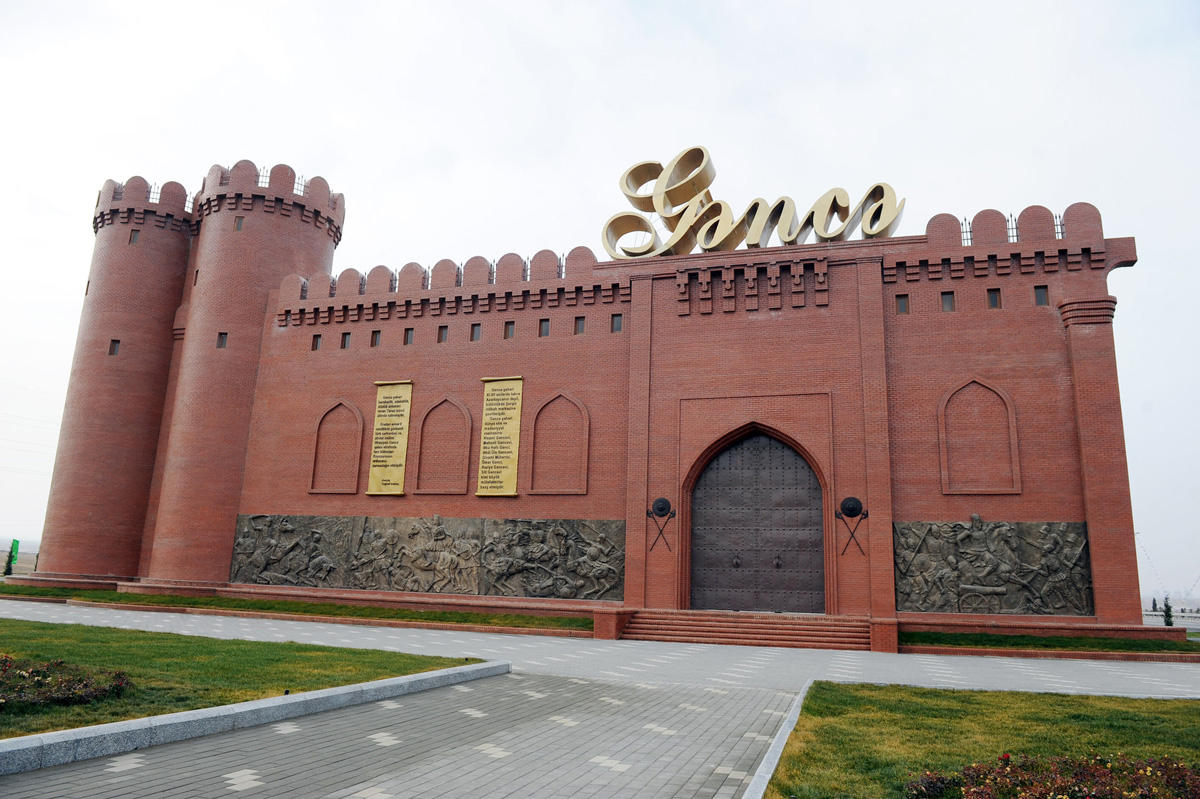Ganja - majestic city in Land of Fire

By Leman Mammadova
Ganja is the second largest city in the country, a monument of ancient culture, the industrial center of western Azerbaijan, the birthplace of the great Nizami.
By the number of its attractions and historical places, it is not inferior to Baku and today is one of the most important cities in the country.
The city is also famous for being involved in the project to restore the Great Silk Road trade route.
Sheikh Bahauddin Complex
The historical and architectural complex of the 17th century, created by Sheikh Bahauddin, includes the Juma mosque (Shah Abbas mosque), Chekyak-Hamam (medieval bath) and the caravanserai. The architect, the astronomer and the vizier of Shah Abbas, Sheikh Bahaudin was a direct descendant of the poet of the medieval East Nizami Ganjavi and played an important role in the architecture of Ganja.
Juma Mosque
The Juma Mosque is the most recognizable historical monument and real decoration of the city. The Juma mosque is named after Shah Abbas as it was built during his reign in the 17th century. This landmark is located in the heart of Ganja.
The mosque’s red-brick building was raised in the early 17th century, and construction was completed in the late 18th century.
Chekyak-Hamam
One of the most popular tourist sites in Ganja is the old bath - Chekyak-Hamam. The building of the bath, like most of the buildings of Ganja, is of red brick.
There are two halls in the bath: a large one with a pool and a fountain in the recreation center, and a small one designed for swimming.
There were steam boilers in the basement of the bath. Steam entered the halls through ceramic pipes located in the walls and floor of the rooms. This heating system worked until the middle of the 20th century.
Since 2002, Chekyak-Hamam has acquired the status of a cultural monument of international importance and is under the protection of UNESCO.
Caravanserai
The caravanserai is the third in time construction in the Sheikh Bahauddin Complex.
Today the building of the medieval caravanserai plays the role of the Temple of Knowledge. At the end of the 20th century, the Ganja College of Humanities was conveniently located here.
The caravanserai is a two-story building that includes 15 rooms and 54 rooms. The building also houses the museum of the poet Meskheti Ganjavi.
Nizami Mausoleum
The great poet Nizami Ganjavi, who was born in Ganja, made an invaluable contribution to the history of not only Azerbaijani, but also world literature. Quinary (Panj Ganj or Khamsa) brought him worldwide fame, combining five poems that reflected not only the poet's high skill of the poet, but also his ethical and philosophical views.
It is located at the entrance to the city from the south-west side. The mausoleum is a modern monumental construction of a cylindrical shape of red granite, hemmed in the manner of semi-circular faces. Below is the entrance to the mausoleum, which seems tiny against the backdrop of the greatness of the whole building. The name Nizami is carved in gold just above the entrance.
Bottle House of Ganja
This unusual bottle house has become a modern landmark of the city. It was built in 1967 by the architect Ibrahim Jafarov in memory of his brother who disappeared during World War II.
In order to rebuild such a structure, it took about 48,000 bottles, which formed the basis of the building and walls, and they were connected with concrete. In order to give the house a non-standard look, the architect used pebbles and mosaics, as well as not without mirror glass.
It took 20 years to build a house, and despite the fact that there are many bottled houses around the world today, at the time it was very strange. In a very short time, the bottle house gained popularity throughout the Soviet Union. Nevertheless, despite all this, the best features of the house do not end there, because inside it there is also a portrait gallery located at the top, under the roof of the building.
The architect himself depicted a collection of panels that were painted in oil. In these pictures were displayed the story of his family, as well as some popular events, in particular - the military. After the war, the house received an extension, and there is also a portrait of the architect.
Khan’s Garden
Khan's garden was founded in 1700, and received its name during the reign of Javad Khan, the last ruler of the Ganja khanate. This park is called simply by the locals - Khan's garden. At the end of the 18th and the beginning of the 19th centuries, it belonged to Javad Khan, in which the khan loved to rest. By order of Khan, rare trees and flowers bought from foreign merchants were actively planted here.
In 2010, the Khan’s Garden was reconstructed and now it is a modern park with lanterns and modern sculptures, which also preserved its ancient trees.
The park has a mini-zoo, an artificial pond with white swans, an installation of a bush in the form of a pianist at the piano in full size, as well as antique-styled phaetons.
---
Follow us on Twitter @AzerNewsAz
Here we are to serve you with news right now. It does not cost much, but worth your attention.
Choose to support open, independent, quality journalism and subscribe on a monthly basis.
By subscribing to our online newspaper, you can have full digital access to all news, analysis, and much more.
You can also follow AzerNEWS on Twitter @AzerNewsAz or Facebook @AzerNewsNewspaper
Thank you!
